- Home
- Richard Dawkins
Climbing Mount Improbable Page 2
Climbing Mount Improbable Read online
Page 2
My own favourite among animal ‘statues’ is the leafy sea dragon (Figure 1.4). It is a fish, a kind of sea-horse, whose body is sculpted into the shape of seaweed. This gives it protection, for it lives among seaweed and is remarkably difficult to see there. Its mimicry is too uncannily good to
Figure 1.4 Perfection of camouflage. A female leafy sea dragon, Phycodurus eques, from Australia. {9}
be accidental in any simple sense. It lies closer to Mount Rushmore than to the Kennedy cliff. My confidence is based partly upon the sheer number of ways in which it impresses us by looking like something that it isn't; and partly upon the fact that fish don't normally have projections of anything like that shape. In this respect the leafy sea dragon's feat compares with the termite-mimic, rather than the ant-mimic.
So far we have talked of objects that impress us as realistic sculptures do, objects that we feel can't be accidental because they look too strikingly like other objects. Leafy sea dragons and ant-mimicking beetles are designoid statues: they overwhelmingly look as if they have been designed by an artist to resemble something else. But statues are only one kind of object that humans design. Other human artefacts impress us not by resembling something but by being unmistakably useful for some purpose. An aeroplane is useful for flying. A pot is useful for holding water. A knife is useful for cutting things.
If you offered a reward for stones that were naturally sharp enough to cut things, and also for stones that happened to be of a shape to hold water, you'd probably be sent some effective makeshifts. Flints often fracture in such a way as to leave a good keen edge, and if you wandered the quarries and screes of the world you'd certainly find some handy natural blades. Among the richness of shapes into which stones can weather, some would happen to include concavities that hold water. Certain types of crystal naturally encrust around a hollow, albeit chunky, sphere which, when it splits in half, yields two serviceable cups. These stones even have a name: geode. I use a geode as a paperweight on my desk, and I'd use it to drink from if its interior were not roughly pitted and therefore hard to wash.
It is easy to devise measures of efficiency that would show up natural pots as less efficient than man-made ones. Efficiency is some measure of benefit divided by cost. The benefit of a pot could be measured as the quantity of water that it holds. Cost can conveniently be measured in equivalent units: the quantity of the material of the pot itself. Efficiency might be defined as the volume of water that a pot can hold divided by the volume of material that goes to make the pot itself. The hollow stone on my desk holds 87.5 cc of water. The volume of the stone itself (which I measured by Archimedes’ famous {10} Eureka-in-the-Bath method) is 130 cc. The efficiency of this ‘pot’ is therefore about 0.673. This is a very low efficiency, not surprisingly so since the stone was never designed to hold water. It just happens to hold water. I have just done the same measurements on a wineglass, whose efficiency turns out to be about 3.5. A friend's silver cream jug is even more efficient. It holds 250 cc of water while the silver of which it is made displaces a mere 20 cc. Its efficiency is therefore as high as 12.5.
Not all human-designed pots are efficient in this sense. A chunky pot from the kitchen cupboard holds 190 cc of water while using up a massive 400 cc of marble. Its ‘efficiency’ is therefore only 0.475, even lower than the totally undesigned hollow stone. How can this be? The answer is revealing. This marble pot is in fact a mortar. It is not designed to hold liquid. It is a hand mill for grinding spices and other foods with a pestle: a stout rod which is wielded with great force against the inside of the mortar. You couldn't use a wineglass as a mortar: it would shatter under the force. The measure of efficiency that we devised for pots is not suitable when the pot is designed as a mortar. We should devise some other benefit/cost ratio, where benefit takes account of strength against being broken by a pestle. Would the natural geode, then, qualify as a well-designed mortar? It would probably pass the strength test but if you tried to use it as a mortar its rough and craggy interior would soon prove a disadvantage, the crevices protecting grains from the pestle. You'd have to improve your measure of the efficiency of a mortar by including some index of smoothness of internal curvature. That my marble mortar is designed can be discerned from other evidence: its perfectly circular plan section, coupled with its elegantly turned lip and plinth seen in elevation.
We could devise similar measures of the efficiency of knives, and I have no doubt that the naturally flaked flints that we happen to pick up in a quarry would compare unfavourably, not only with Sheffield steel blades but with the elegantly sculpted flints that museums display in Late Stone Age collections.
There is another sense in which natural, accidental, pots and knives are inefficient compared with their designed equivalents. In the course {11} of finding one usefully sharp flint tool, or one usefully watertight stone vessel, a huge number of useless stones had to be examined and discarded. When we measure the water held by a pot, and divide by the volume of stone or clay in the material of the pot, it might be fairer to add into the denominator the cost of the stone or clay discarded. In the case of a man-made pot thrown on a wheel, this additional cost would be negligible. In the case of a carved sculpture the cost of discarded chippings would be present but small. In the case of the accidental, objet trouvé; pot or knife, the ‘discard cost’ would be colossal. Most stones don't hold water and are not sharp. An industry that was entirely based upon objets trouvés, upon found objects as tools and utensils, rather than artificially shaped tools and utensils, would have a huge dead weight of inefficiency in the spoil heaps of alternatives discarded as useless. Design is efficient compared with finding.
Let's turn our attention now to designoid objects — living things that look as though they have been designed but have actually been put together by a completely different process — beginning with designoid pots. The pitcher plant (Figure 1.5) could be seen as just another kind of pot, but it has an elegant ‘economy ratio’, comparable to the wineglass that I measured, if not the silver jug. It gives every appearance of being excellently well designed, not just to hold water but to drown insects and digest them. It concocts a subtle perfume which insects find irresistible. The smell, abetted by a seductive colour pattern, lures prey to the top of the pitcher. There the insects find themselves on a steep slide whose treacherous slipperiness is more than accidental, set about with downward-facing hairs well placed to impede their last struggle. When they fall, as they nearly always do, into the dark belly of the pitcher, they find more than just water in which to drown. The details, brought to my attention by my colleague Dr Barrie Juniper, are remarkable and I'll briefly tell the story.
It is one thing to trap insects, but the pitcher plant lacks jaws, muscles and teeth with which to reduce them to a state fit for digesting. Perhaps plants could grow teeth and munching jaws, but in practice there is an easier solution. The water in the pitcher is home to a rich community of maggots and other creatures. They live {12}
Figure 1.5 A designoid pot. Pitcher plant, Nepenthes pervillei, from the Seychelles.
nowhere else but in the enclosed ponds created by pitcher plants, and they are endowed with the jaws that the plant itself lacks. The corpses of the pitcher plant's drowned victims are devoured and decomposed by the mouthparts and digestive juices of its maggot {13} accomplices. The plant itself subsists on the detritus and excretory products, which it absorbs through the lining of the pitcher.
The pitcher plant doesn't just passively accept the services of maggots that happen to fall into its private pool. The plant works actively to provide the maggots with a service that they need in their turn. Analyse the water in a pitcher plant and you find a singular fact. It is not fetid, as might be expected of standing water in such conditions, but strangely rich in oxygen. Without this oxygen the vital maggots could not flourish, but where does it come from? It is manufactured by the pitcher plant itself, and the plant gives every apparent indication of being specifically designed to oxygenate
the water. The cells that line the pitcher are richer in oxygen-producing chlorophyll than the outside cells that face the sun and air. This surprising reversal of apparent common sense is explicable: the inside cells are specialized to secrete oxygen directly into the water inside the pitcher. The pitcher plant does not just borrow its vicarious jaws: it hires them, paying in the currency of oxygen.
Other designoid traps are common. The Venus's fly-trap is as elegant as the pitcher plant, with the added refinement of moving parts. The insect prey releases the trap by triggering sensitive hairs on the plant, whose jaws smartly close. The spider web is the most familiar of all animal traps, and we shall do it justice in the next chapter. An underwater equivalent is the net constructed by stream-dwelling caddis fly larvae. Caddis larvae are also notable for their feats as builders of houses for themselves. Different species use stones, sticks, leaves or tiny snail shells.
A familiar sight in various parts of the world is the conical trap of the ant-lion. This fearsome creature is the larva of — what could sound more gentle? — a lacewing fly. The ant-lion lurks just under the sand at the bottom of its pit, waiting for ants or other insects to fall in. The pit achieves its almost perfectly conical shape — which makes it hard for victims to claw their way out — not by design but as a consequence of some simple rules of physics, exploited by the way the ant-lion digs. From the bottom of the descending pit, it flicks sand right over the edge with a jerk of the head. Flicking sand from the bottom of a pit has the same effect as draining an hourglass from {14} below: the sand forms itself naturally into a perfect cone of predictable steepness.
Figure 1.6 brings us back to pots. Many solitary wasps lay their eggs on prey, which have been stung to paralysis and then hidden in a hole. They seal the hole up so that it is invisible, the larva feeds on the prey inside and finally emerges as a winged adult to complete the
Figure 1.6 Designoid pots made by animal artisans: (a) potter wasp and (b) mason bee. {15}
cycle. Most species of solitary wasp dig their nesting hole in the ground. The potter wasp makes its ‘hole’ out of clay — a round pot, up a tree, mounted inconspicuously on a twig (Figure 1.6a). Like the pitcher plant, this pot would score favourably on our efficiency test for apparent design. Solitary bees show a similar pattern of nesting in holes, but they feed their larvae on pollen instead of animal prey. Like the potter among wasps, many species of mason bee build their own pot nest. The pot in Figure 1.6b is made not from clay but from small stones cemented together. Apart from its resemblance to an efficient, man-made receptacle, there is something else rather wonderful about the particular specimen photographed. You see only one pot here, but there are actually four. The other three have been covered by the bee with hardened mud, to give an exquisite match to the surrounding rock. No predator would ever find the young larvae growing up in the pots. The only reason this cluster was seen, by my colleague Christopher O'Toole on a visit to Israel, is that the bee had not quite finished covering the last pot.
These insect pots have all the hallmarks of ‘design’. In this case, unlike the pitcher plant, they really were fashioned by the actions of a skilled — albeit probably unconsciously so — creature. The pots of the potter wasp and mason bee seem, on the face of it, closer to man-made pots than to the pitcher plant. But the wasp and the bee didn't consciously or deliberately design their pots. Although they were shaped, out of clay or stones, by behavioural actions of the insects, this is not importantly different from the way the insects’ own bodies were made during embryonic development. This may sound odd but let me explain. The nervous system grows in such a way that the muscles and limbs and jaws of the living wasp move in certain coordinated patterns. The consequence of these particular clockwork limb movements is that clay is gathered and fashioned into the shape of a pot. The insect very probably does not know what it is doing, nor why it is doing it. It has no concept of a pot as a work of art, or as a container, or as a brood chamber. Its muscles just move in the way its nerves dictate, and a pot is the result. So for this reason we firmly — if wonderingly — classify the wasp and bee pots as designoid not designed: not shaped by the animal's own creative volition. Actually, to {16}
Figure 1.7 Designoid craftsmanship, (a) Weaverbird nest and (b) tailorbird, Orthotomus sutorius, with its nest.
be fair, I cannot know for certain that wasps lack creative volition and true design. It is enough for me that my explanation works even if they do. The same goes for birds’ nests (Figure 1.7) and bowers, caddis houses and caddis nets, but not for the sculptures of Mount Rushmore or the tools used to hew them — they really are designed.
Karl von Frisch, the famous Austrian zoologist who deciphered the bee dance, once wrote: ‘If we imagined for a moment that termites were as tall as human beings, their tallest hillocks, enlarged on the same scale, would be nearly a mile high, four times the height of New York's Empire State Building.’ The skyscrapers of Figure 1.8 were made by Australian compass termites. They are called compass termites because their mounds are always lined up north — south — they can be used as compasses by lost travellers (as can satellite dishes, by the way: in Britain they seem all to face south). The advantage of this for the termites is that the broad, {17}
Figure 1.8 Insect skyscrapers aligned north to south. Compass termite mounds in Australia.
flat surfaces of the mound are warmed by the early-morning and late-afternoon sun. But the mound is protected from the fierce noonday sun since only the sharp edge is presented to the north — where the sun is at midday in the southern hemisphere. We could be forgiven for thinking the termites had designed this clever trick themselves. But the principle by which their building behaviour appears intelligent is identical to the principle by which the jaws and legs of the termites appear designed. Neither of them is designed. Both are designoid.
Animal artefacts, like caddis and termite houses, birds’ nests or mason bee pots, are fascinating, but they are a special case among designoid things — an intriguing curiosity. The name ‘designoid’ primarily refers to living bodies themselves and their parts. Living bodies are put together not by skilled hands, beaks or jaws, but by the convoluted processes of embryonic growth. A mind addicted to exhaustive classification systems might see artefacts like wasp pots as ‘second order designoid objects’ or as an intermediate category between designed and designoid, but I think this is simply confusing. Admittedly the pot is {18} made of mud, not living cells, and it is shaped by limb movements which superficially resemble the hand movements of a human potter. But all the ‘design’, all the elegance, all the fitness of the pot to perform a useful task, come from very different sources in the two cases. The human pot is conceived and planned by a creative process of imagination in the head of the potter, or by deliberate imitation of the style of another potter. The wasp pot gets its elegance and fitness to its task from a very different process — from exactly the same process, indeed, as gave elegance and fitness to the wasp's own body. This will become clearer if we continue our discussion of living bodies as designoid objects.
One of the ways we recognize both true design and designoid pseudo-design is that we are impressed by resemblances between objects and other objects. The Mount Rushmore heads are obviously designed because they resemble real presidents. The leafy sea dragon's resemblance to seaweed is equally obviously not an accident. But mimicry like this, and like the resemblance of beetle to termite, or stick insect to twig, is by no means the only kind of resemblance that impresses us in the living world. Often we are stunned by the resemblance between a living structure and a man-made device that does the same job. The ‘mimicry’ between human eye and man-made camera is too well known to need illustrating here. Engineers are often the people best qualified to analyse how animal and plant bodies work, because efficient mechanisms have to obey the same principles whether they are designed or designoid.
Often living bodies have converged upon the same shape as each other, not because they are mimicking eac
h other but because the shape that they share is separately useful to each of them. The hedgehog and the spiny tenrec in Figure 1.9 are so similar that it seemed almost a waste of effort to draw both of them. They are moderately closely related to each other, both being members of the order Insectivora. Yet other evidence shows that they are sufficiently unrelated for us to be sure that they evolved their prickly appearance independently, presumably for parallel reasons: prickles give protection from predators. Each of the prickly animals is pictured next door to a shrew-like animal which is a closer cousin to it than the other prickly animal is. Figure 1.10 gives another example. Animals that swim fast {19}

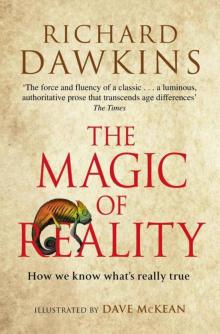 The Magic of Reality
The Magic of Reality The Extended Phenotype
The Extended Phenotype The God Delusion
The God Delusion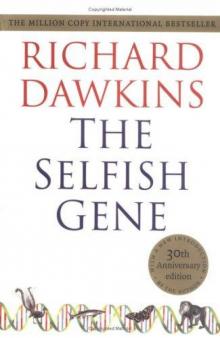 The Selfish Gene
The Selfish Gene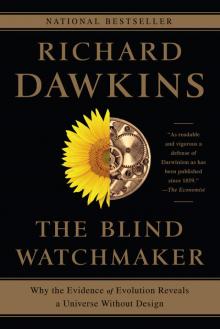 The Blind Watchmaker
The Blind Watchmaker The Greatest Show on Earth
The Greatest Show on Earth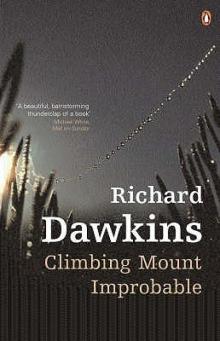 Climbing Mount Improbable
Climbing Mount Improbable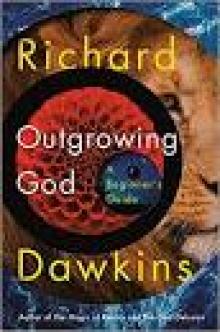 Outgrowing God
Outgrowing God Brief Candle in the Dark
Brief Candle in the Dark The Greatest Show on Earth: The Evidence for Evolution
The Greatest Show on Earth: The Evidence for Evolution Science in the Soul
Science in the Soul An Appetite for Wonder
An Appetite for Wonder